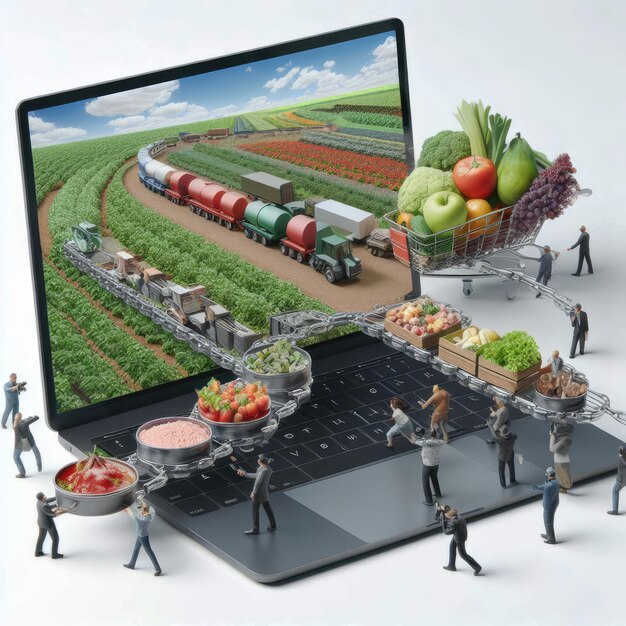Introduction:
Infrastructure serves as the backbone of agricultural supply chains, facilitating the movement of goods from farm to market. In this blog post, we’ll explore the importance of investing in infrastructure to enhance the resilience of agricultural supply chains, examining key areas of focus and highlighting the benefits of such investments for farmers, suppliers, and consumers alike.
1. Transportation Networks and Connectivity:
Investments in transportation networks are critical for ensuring the efficient flow of agricultural products from production areas to markets. Improve road, rail, and waterway infrastructure to reduce transportation costs, minimize transit times, and enhance accessibility to remote or underserved areas. Enhance connectivity between rural farming communities and urban markets to facilitate market access and promote economic development. Strengthening transportation networks enhances the resilience of agricultural supply chains by reducing the risk of disruptions and enabling timely delivery of products to consumers.
2. Storage and Cold Chain Facilities:
Storage and cold chain facilities play a crucial role in preserving the quality and safety of agricultural products throughout the supply chain. Invest in modern storage facilities equipped with temperature-controlled environments, humidity control systems, and pest management measures to prevent spoilage and reduce post-harvest losses. Expand cold chain infrastructure to support the transportation and storage of perishable products such as fruits, vegetables, and dairy products. By investing in storage and cold chain facilities, stakeholders can extend the shelf life of agricultural products, reduce waste, and ensure consistent supply to markets, thereby enhancing the resilience of agricultural supply chains.
3. Processing and Value-Adding Infrastructure:
Investments in processing and value-adding infrastructure enable farmers to diversify their product offerings, increase value capture, and access higher-margin markets. Establish processing facilities for crops such as grains, fruits, and vegetables to produce value-added products such as flour, juices, and canned goods. Upgrade processing technologies and equipment to improve efficiency, quality, and safety standards. By adding value to agricultural products locally, stakeholders can reduce dependency on external markets, create employment opportunities, and enhance the resilience of rural economies.
4. Information and Communication Technology (ICT) Solutions:
Harnessing information and communication technology (ICT) solutions is essential for modernizing agricultural supply chains and improving efficiency and transparency. Invest in digital platforms, mobile applications, and data analytics tools to facilitate real-time communication, traceability, and market access for farmers and suppliers. Implement ICT solutions for crop monitoring, weather forecasting, and market intelligence to enable informed decision-making and risk management. By leveraging ICT solutions, stakeholders can enhance the resilience of agricultural supply chains by optimizing resource allocation, reducing information asymmetry, and responding quickly to market fluctuations and disruptions.
Conclusion:
Investing in infrastructure is crucial for strengthening the foundation of agricultural supply chain resilience. By improving transportation networks, expanding storage and cold chain facilities, upgrading processing and value-adding infrastructure, and harnessing ICT solutions, stakeholders can enhance the efficiency, reliability, and sustainability of agricultural supply chains. Embracing infrastructure investments not only benefits farmers, suppliers, and consumers but also contributes to economic growth, food security, and rural development. Investing in infrastructure is an investment in the future resilience and prosperity of agricultural supply chains.
